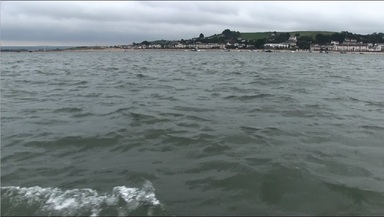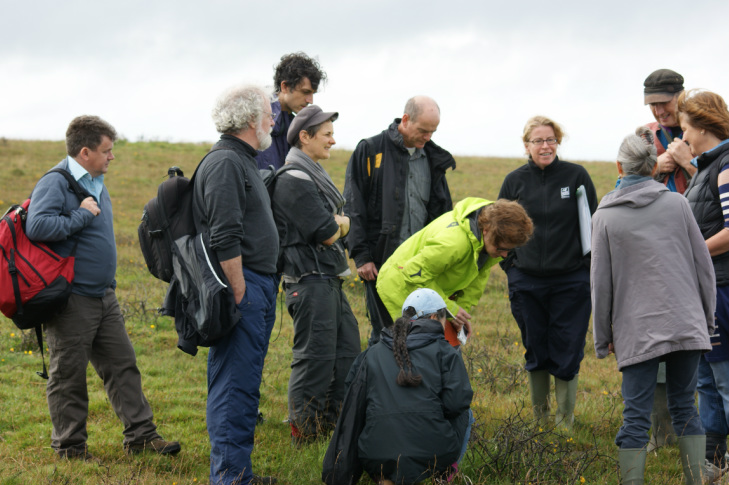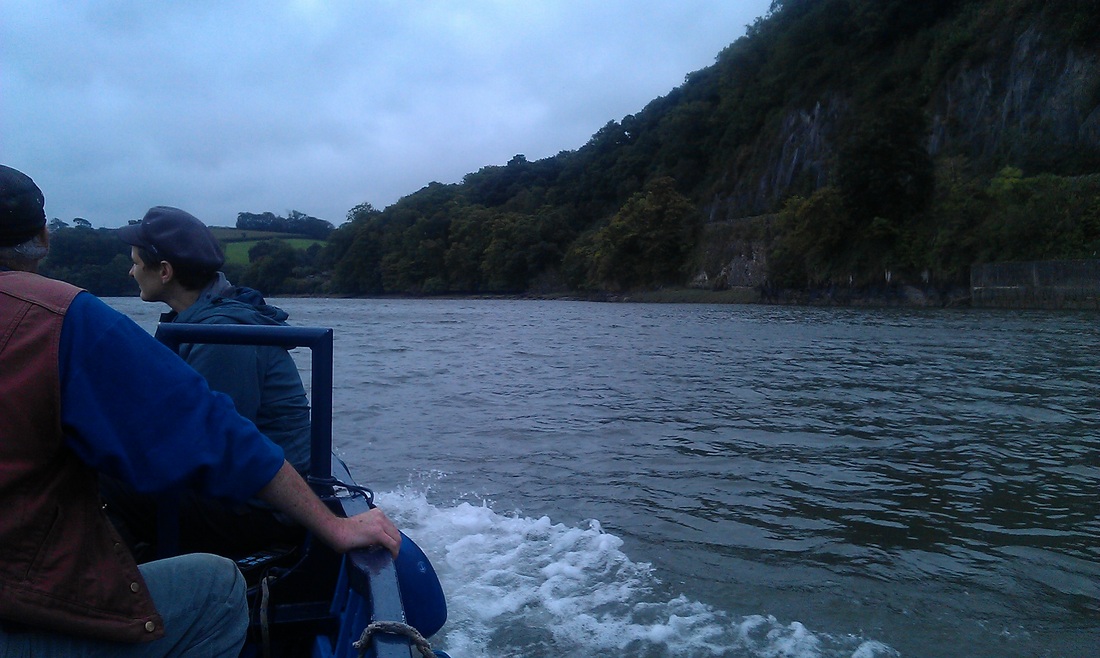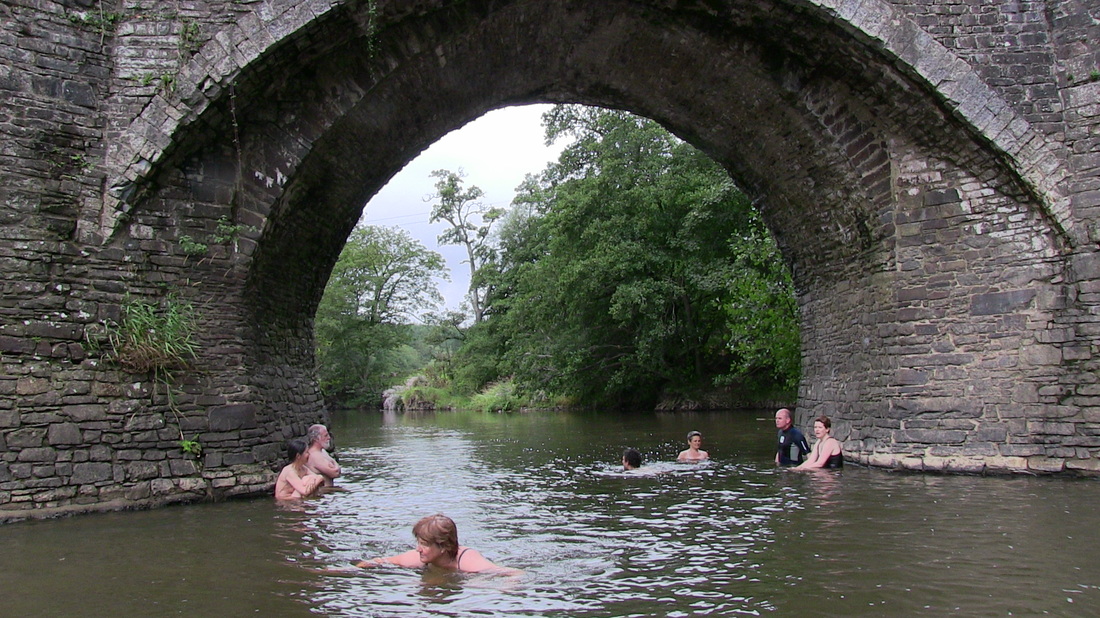Workshop – 2013 October
The More than Human Project was organized by PI Michelle Bastian, with Co-I’s Richard Coles, Phil Jones and Owain Jones
Co-design with water: an aesthetic conceptual provocation
9/12/2013
Originally published: On the more than human research website.
In an age when man has forgotten his origins and is blind even to his most essential needs for survival, water….has become the victim of indifference.
Rachel Carson, the Silent Spring
“Water is the one substance from which the earth can conceal nothing; it sucks out its innermost secrets and brings them to our very lips”
Jean Giraudoux (1882-1944), “The Madwoman of Chaillot”
The fairies who have just surprised a boor who has polluted their spring are in secret conference: “What do you wish for the one who muddied our water, my sisters?” “That he become a stammerer and never be able to articulate a word.” “And you my sister?” “That he always go about with his mouth open and stand gaping in the street.” “And you my sister?” “That he never take a step without, all due respect to you….breaking wind.
A legend from Lower Normandy recorded by Paul Sebillot in “Le Folklore de France”
As we say in Scotland, there were times I was lost in the blather. Wondering why we were sitting on our asses when there were springs to be hunted, to be chased on muddies knees, to listen to the spot where water emerges from the soil… but I learned that was not what we were about. At least not logically. Clara on the way would say… “‘Look’ the landscape has changed what is that?” It was the colm (culm) we were searching for. But we were prepared for a landscape survey, a visual relationship rather than the mud and boots, body, mind and soul, the sound and the mud variation of spring hunting that I prefer.
Listen more to things Than to words that are said
The waters voice sings And the flame cries
And the wind that brings The woods to sighs
Is the breathing of the dead
—Birago Diop–
Eutopia versus Utopia: Issues of the Regional Imperative:
When Patrick Geddes coined the word Eutopia, meaning “good place,” in his address to the Sociological Society in July 1904, he proved too much for some of the intellectuals of London. In comparing it with the commonly understood Utopia coined by Thomas More, a word derived from the Greek “no place,” he summed up a fundamental tenet of the regional imperative: that it makes sense to design with the forms and cultural and ecological processes already present in a location rather than to force an idealized, preconceived plan upon a site. Eutopia is assured when culture and ecology become part of the design thinking. Utopia is the consequence of ignoring them.
Michael Hough “Out of Place; Restoring Identity to the Regional Landscape”
I don’t think that we can simply work together with water; it works through us, it is us. ‘Why listen to it?’ and ‘What can it tell us?’ might be better questions. When we link human to communities of ecology and the complex material/life interactions in place we have to remember to think differently and reshape our ethical parameters. To listen to water takes all the skills and ability, tools and technology, chemistry and attention that we can muster; in which case, simply put, it tells us everything about the world around us. The fundamental question is how is an artist or humanities scholar’s method differentiated from that of a scientist? Traditionally it’s through looking, but a gaze is not enough anymore, it requires sustained being-with, it is about intimate inter-relationship over time so that we begin to see a normative aesthetic, a condition of baseline health which allows us to see the signs that tells us that something has changed. To do this work well (which we have in common with science) we must love the subject of our inquiry. Differentiating the arts and humanities, it is what we want to know, what we need to experience, the purpose of aesthetic empiricism if you will. We are not looking for definitive reproducible answers; we are looking for core experiential truths that dip below the surface, that engage the heart, the mind, and the soul at the same time. But at the end of the day, we have to work with water on its own terms.Thoughts on the Community-based Participatory Research Guide.
[In our last session of the workshop we worked through core questions from the Guide to Ethical Practice in Community-based Participatory Research to explore how they might apply to research with water – Ed.]
“Water is the principle, or the element of all things”
Thales of Miletus
Anyone who has spent the time to develop an empathic relationship with living water in that place should be engaged. Empathy only emerges in place over time, it is recognition of the normative health of a living thing that leads to attention to those things that indicate disruption. The question is can we see pleasure and joy in living things that have neither language nor eyes with which to speak to our ears or our heart.
“In the dialectical theme of the purity and impurity of water, the fundamental law of material imagination acts in both directions, guaranteeing the eminently active nature of the substance: one drop of pure water suffices to purify an ocean; one drop of impure water suffices to defile a universe.”
Gaston Bachelard “Water and Dreams; An essay on the Imagination of Matter”
Funny questions: Surely we all realize that the objective is to trust ourselves as we strive to hear things from something that does not speak, to find emotional communion with a living thing that has no eyes. Our goal is to find our health and wellbeing in it, and it in us; to recognize the ethical principles that underpin this endeavour.
…Water is the only substance on earth that naturally occurs in all three states at temperatures we normally experience: solid, liquid and gas. “No scientist ancient or modern has ever managed a quantitative description of the thermodynamics of water, it is to the structural analyst what Waterloo was to Bonaparte. Tens of thousands of years ago our wise forbearers shared myths wherein water was said to be the primal, chaotic substance from which all forms proceed. It is clear that our forbearers have not been refuted, clarified or improved upon. ”
Titus Irving Gerrad speaking about the structure of water in the monograph; “What is Water?”
Honestly, with humility and attention to the role that the arts and humanities play in the conception, perception and experience that leads to a critical understanding and potential evolution of human values through a reflective relationship with water. Water speaks to us through its component parts, its dissolution and erosion, its non-structural integrity, by its ability to flow around and about, through all things, to embody the lightest breeze, the smallest drop and the wildest gale, taking the form of the force which engages…Fini: Tim (with Reiko in mind, although she has her own notes.)



